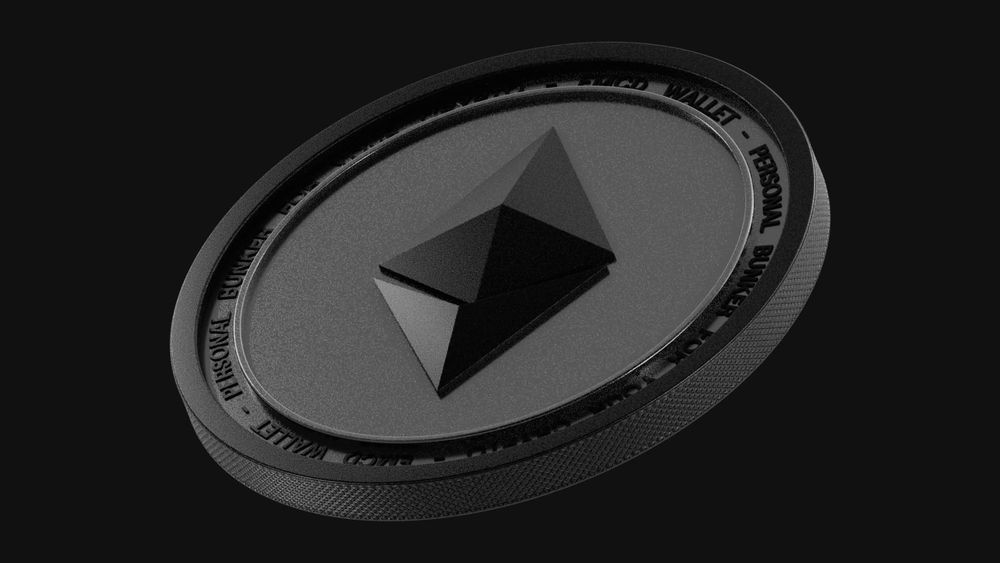Forecast for Ethereum’s Price: Will the Decline Last?

Ethereum is one of the most popular cryptocurrencies on the market and serves as a key platform for conducting transactions. Launched in 2015, Ether has truly earned its nickname, ‘digital silver’. However, like other digital assets, its price has seen significant volatility over the years.
A major event was the shift to the Proof of Stake (PoS) algorithm in 2022. Ever since, investors have been asking: ‘What will happen to Ethereum’s price, and does the coin have a solid future?’. The crypto market remains highly volatile, so it’s crucial to closely examine the factors influencing Ether’s value.
The material is published solely for informational purposes and is not an investment recommendation..
Recent Upgrades and Key Features Explained
Ethereum ranks second among cryptocurrencies, right after Bitcoin. It has unlimited issuance and, as an altcoin (any coin that isn’t Bitcoin), it supports smart contracts for creating decentralized applications.

Vitalik Buterin, a Canadian-Russian programmer now considered a legend in crypto circles, first proposed the idea of Ethereum in 2013. By 2015, the network had launched and quickly rose to prominence. It became popular both as a coin and a platform. Its mining feature, similar to Bitcoin, attracted a great deal of interest and boosted its early rise to the number-two spot. Yet Ethereum was never viewed as a Bitcoin clone because it offered a unique platform that other crypto enthusiasts could build upon.
From the start, Ethereum stood out among altcoins thanks to its architecture, supporting smart contracts and decentralized applications.
As of early May 2025, Ether remains the second-largest cryptocurrency by market cap, at around $300 billion, with its price hovering near $2,480 per ETH.
One of the most important milestones in Ethereum’s history was its transition from Proof of Work (PoW) to Proof of Stake (PoS). Until September 15, 2022, Ethereum used a mining model similar to Bitcoin’s, which required significant computational power and energy consumption. This intensive energy use attracted criticism from environmental groups and concerned investors. With the switch to PoS, the network no longer relies on miners. Instead, new blocks are validated by users who stake their coins, dramatically reducing energy requirements and shifting the security model from computation to capital.
Overall, the number of transactions on Ethereum after The Merge has stayed roughly the same as two years ago. Fees haven’t drastically changed, though gas prices have dipped slightly. The number of unique addresses on the network has grown from 205 million to 283 million over two years, and daily new address registrations jumped from about 69,000 to around 135,000.

Switching to PoS has also made the Ethereum network more eco-friendly. Right after The Merge, Ether’s price saw a series of drops, which many analysts attribute to the crypto market’s volatility and the network’s adjustment to new conditions.
A key advantage of PoS is less centralization and easier access for users, since powerful hardware is no longer essential.
Main Benefits of Proof of Stake (‘proof of stake’):
- Significantly lower energy consumption. Unlike traditional mining, PoS doesn’t require massive amounts of electricity, making it more environmentally friendly and cost-effective for participants.
- No ongoing need to inflate the coin supply. Since validators earn rewards through staking rather than resource-intensive mining, there's less pressure to continually create new coins to incentivize participation.
- Easier access for new users. Joining the network as a validator or participant is more straightforward and affordable, as it doesn’t require expensive hardware or specialized technical knowledge.
Its main drawback is the possibility of monopolization if too many coins end up in the hands of a small group.
Two years on, Ether has shown it isn’t facing collapse — something some feared early on. After The Merge, the network introduced a mechanism that permanently burns transaction fees, lowering Ether’s supply and reducing inflation. For the first time, Ethereum’s supply became deflationary. By cutting back the amount in circulation, this model helps preserve the token’s value.
Top Metrics to Assess Ethereum
To make a reasonable Ethereum price prediction, it’s important to look at technical indicators and overall market data. While it’s tough to pin down future prices exactly, you can gauge the general trend.
- Simple Moving Average (SMA). This indicator shows an asset’s average price over a set period. For Ethereum, being below the 200-day SMA can signal a continuing downward trend. Still, SMA reacts with a delay, so the market may already be moving by the time the indicator reflects it
- Stochastic Oscillator. This reveals whether an asset is oversold or overbought. Ethereum currently appears close to oversold territory, which could suggest a short-term price rebound. However, the indicator can linger in overbought or oversold zones for a while, especially in highly volatile markets like crypto
- Fundamental Factors. Naturally, Ethereum’s price depends on supply and demand. Demand for this key altcoin remains strong, especially among developers of decentralized apps and DeFi platforms, which points to a steady upward trend
Based on these indicators, one might expect Ethereum’s price to rise in the short run. Longer-term trends will hinge on external factors like the global economy, regulatory changes, and competition.
Factors Influencing Ethereum’s Price
Speculative Trading
When forecasting Ethereum’s price in 2024, consider the actions of short-term traders aiming to profit from volatility. Their activity can cause short-term price swings but isn’t likely to set lasting trends, since these traders typically exit positions quickly.

Competition with Other Cryptocurrencies
Though Ethereum is currently second by market cap, competition is growing. For instance, Solana, Polkadot, and Cardano offer faster and cheaper transactions, drawing investor attention. These blockchains also support smart contracts.
New projects can appear out of nowhere, just like Ethereum did when it shot to second place. Some analysts believe Ether has the potential to overtake Bitcoin, but competition remains a factor.
The Influence of Bitcoin
As of 2024, Bitcoin is still the top cryptocurrency. Most altcoins, including ETH, follow its overall price pattern. Historically, changes in Bitcoin’s price often trigger moves in other coins. The link between BTC and ETH is still strong, so any big shifts in Bitcoin’s price can ripple through to Ethereum.
Implementation of New Protocols
In 2022, The Merge was a turning point for Ethereum, switching the network to PoS. Right after that, Ethereum’s price and market cap dipped, but many in the crypto world reacted positively to the change.
If, right after The Merge in September 2022, Ethereum’s market cap was around $150 billion, it has since doubled. Many analysts foresee further growth for ETH.

Ethereum Price Forecast
Predicting the price of any cryptocurrency is challenging due to high volatility, but Ethereum seems likely to keep growing, given the steady demand.
Interest in staking may also rise, as users ‘lend’ their crypto to the network and earn rewards, much like putting money in a bank deposit. More staking participants could push Ether’s price higher. Growth may also come from the expanding DeFi sector and decentralized apps running on Ethereum.
By 2026, Ethereum’s price could keep climbing, with some analysts expecting it to reach $5,000. After 2026, the price will hinge on further tech developments, institutional investments, and competition. Experts suggest that by 2030, Ethereum might hit $10,000 or more.
Is Ethereum Worth Investing In?
Ethereum’s blockchain is highly decentralized, which contributes to its popularity and trustworthiness. However, it still faces scalability challenges, and gas fees for certain transactions can reach as high as $50 — a significant barrier for some users.
Despite these issues, ETH remains a compelling option for traders and long-term investors. Its price is highly volatile — even more so than Bitcoin — but that also means it offers greater potential returns for those who manage risk effectively.

Another advantage is Ethereum’s liquidity: it’s easy to convert Ether into other cryptocurrencies, which makes it particularly beginner-friendly.
A key feature attracting investors is the ability to stake ETH and earn rewards by supporting network operations. This became accessible to a much broader range of users following Ethereum’s transition to Proof of Stake.
How to Buy Ethereum: Step-by-Step Guide
Choosing a Crypto Exchange
Popular platforms include Binance, Coinbase, Kraken, and Bybit. Choose one with low fees, good security, and high trading volume.
Payment Methods
You can buy ETH via bank cards, bank transfers, P2P platforms, or stablecoins like USDT and USDC.
How to Avoid High Fees
- Use limit orders instead of market orders
- Choose exchanges with lower trading and withdrawal fees
- Avoid small transactions (flat fees can eat into your capital)
KYC and Security Tips
- Always complete KYC (Know Your Customer) on the exchange
- Enable 2FA (two-factor authentication)
- Don’t store large amounts on exchanges — use wallets (see below)
Where to Store Ethereum Safely
Once you’ve purchased Ethereum, storing it securely is essential. Unlike traditional assets, crypto puts the responsibility of security directly on the user. Choosing the right type of wallet — and knowing how to use it safely — can help protect your funds from theft, loss, or accidental exposure. In this section, we’ll explore the difference between hot and cold wallets, recommend some of the best Ethereum wallets, and share key tips on avoiding scams and setting up hardware wallets properly.
Hot Wallets vs Cold Wallets
- Hot wallets are connected to the internet (MetaMask, Trust Wallet). Great for daily use, but more vulnerable to hacks
- Cold wallets are offline devices (Ledger, Trezor) — ideal for long-term, secure storage
Best Wallets for Ethereum
- The EMCD Wallet is a reliable and user-friendly solution for storing, sending, and receiving Ethereum (ETH) and other cryptocurrencies. Designed with a strong focus on security and convenience, it’s an excellent choice for both beginners and experienced crypto users.
- MetaMask — browser-based, great for DeFi
- Trust Wallet — mobile, beginner-friendly
- Ledger Nano X / S Plus — cold storage with Bluetooth
- Trezor Model T — secure and easy-to-use hardware wallet
How to Set Up a Hardware Wallet
- Buy only from official sources
- Follow the setup guide included
- Write down and securely store your recovery phrase
Tips for Avoiding Scams and Phishing
Keeping your Ethereum safe isn’t just about choosing the right wallet — it’s also about staying vigilant. Here are key practices to protect yourself from common threats:
- Always double-check URLs. Only connect your wallet to trusted websites. Phishing sites often look identical to real ones but are designed to steal your funds.
- Never share your seed phrase. This is the master key to your wallet. No legitimate service will ever ask for it. If someone has it, they can take everything.
- Use a separate browser profile or device for crypto activity. This minimizes the risk of malware or malicious extensions compromising your wallet.
Forecast for Ethereum’s Price: What’s Next?
Ethereum has weathered turbulence, adapted to technological shifts, and retained its place as the leading platform for decentralized applications. Its move to Proof of Stake was a game-changer — not just for the network, but for the entire crypto industry — reducing energy use, broadening access, and paving the way for a more sustainable future.
Yes, Ethereum still faces hurdles: gas fees, scalability issues, and fierce competition from faster, cheaper blockchains. But despite that, the fundamentals remain strong. The growing ecosystem of DeFi apps, the continued developer activity, and increasing interest in staking all point to a blockchain that’s not only surviving — but evolving.
ETH’s price may fluctuate wildly in the short term, but long-term prospects look promising. As staking becomes more attractive and institutional interest grows, Ethereum could continue gaining value — potentially reaching $5,000 or even $10,000 in the coming years.
Still, investors should proceed with caution. The crypto market remains highly volatile, and success depends on research, risk management, and patience. Whether you're a trader or a long-term believer, Ethereum offers opportunity — but only for those ready to navigate the ups and downs of digital finance.
In crypto, nothing is guaranteed — but Ethereum is one bet that continues to build the future.
FAQ
Can you still mine Ethereum?
No. Ethereum switched to Proof of Stake in 2022, so mining is no longer possible. Now you can stake ETH and earn rewards by helping secure the network.
Is Ethereum worth investing?
Ethereum is still one of the top cryptocurrencies. It powers DeFi, NFTs, and many blockchain apps. Despite volatility, it’s considered a solid long-term asset by many investors, especially with staking options available.
Can Ethereum’s price be predicted?
Not exactly. The crypto market is unpredictable. But indicators like moving averages, market trends, and on-chain data can help you understand where the price might be heading.
What affects Ethereum’s price?
Several things: Bitcoin’s price, crypto regulations, network upgrades, demand for smart contracts, staking activity, and competition from other blockchains.
Does Ethereum still follow Bitcoin’s price?
Often yes. When Bitcoin rises or falls sharply, Ethereum tends to move too. But Ethereum also reacts to its own ecosystem updates and user activity.
Is it safe to hold Ethereum?
Yes — if you store it properly. Use trusted wallets, enable two-factor authentication, and watch out for scams. For long-term storage, a hardware wallet is recommended.
How do I buy Ethereum?
You can buy Ethereum on major exchanges like Binance, Coinbase, Kraken, or Bybit. Choose a platform, complete identity verification (KYC), and fund your account using a bank card, transfer, or stablecoins. Then you can trade for ETH.
Where should I store Ethereum after buying?
You can store ETH in a hot wallet (connected to the internet) or a cold wallet (offline). For everyday use, apps like MetaMask or Trust Wallet are fine. For long-term storage, consider hardware wallets like Ledger or Trezor.





